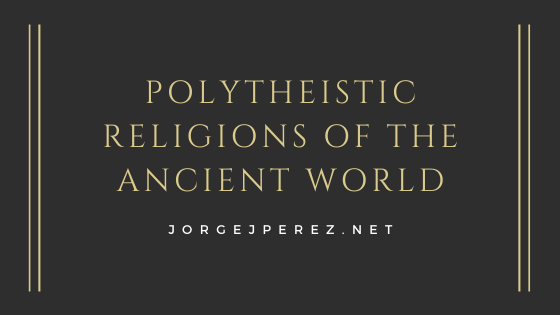Over the course of history, religions have taken different forms. In the modern era, there are a few predominant religions including Christianity, Islam, Judaism, Buddhism, and more, but in ancient times, more religions existed among different groups of people. The number of polytheistic religions, or belief systems that entailed the worship of multiple deities, was also significantly higher than what is practiced today.
Monotheism, or the belief in a singular divine entity or God, did not become common until the modern era. One reason for the prevalence of polytheism is the persistent belief that an individual’s diverse needs and desires could not be accounted for by a single entity. In this way, it was more popular to believe in a pantheon of deities, each representative of different aspects of life.
While most religious individuals today do not adhere to the teachings of polytheistic religions, it is beneficial to understand the nature of such belief systems as well as the similarities between ancient and modern religious beliefs and practices.
Greco-Roman Pantheons
The Greek and Roman pantheons are relatively well-known, as these are among the most commonly discussed when it comes to ancient societies and religions. The Greeks established their pantheon of 12 major gods and hundreds of minor deities before the Roman forces occupied Greece, and following this invasion, Roman and Greek beliefs were blended, resulting in the development of a separate but similar pantheon consisting of the Roman gods. The beliefs and rituals surrounding the Greco-Roman gods were later influenced by the introduction of notable philosophical ideas, demonstrating the malleability of a religion that entails the worship of numerous gods.
Norse Gods
Much like the ancient Greek and Roman pantheons, the Nordic gods and goddesses were numerous. The most commonly worshipped gods included Odin, Freyr, and Thor, but the number of deities and other divine entities far exceeded these three. Unlike monotheistic faiths like Christianity, the Norse religion had no black-and-white view of morality, and the concepts of good and evil were complicated. They myths of the Norse people reflected this worldview as well as a profound respect for nature and a cyclical approach to life regarding death.
Mesoamerican Religions
In conjunction with a cyclical calendar, Mesoamerican cultures like the Mayans and the Aztecs worshipped a pantheon in pursuit of balance. Most of the Actec deities were human-like, but the Mayans worshipped some deities with animalistic features, as well. In order to please the gods, maintain balance, and in a broader sense, prevent the end of the world, Mesoamerican civilizations partook in rituals that often involved blood sacrifices.
In addition to the worship of multiple gods, a defining characteristic of Mesoamerican faiths was the veneration of the dead. The Mayans, Aztecs, and Tarascans, among others, would hold celebrations to honor and remember their deceased relatives and ancestors.
Hinduism
With a large, active following, Hinduism is arguably the sole example of a thriving ancient religion, and it is commonly recognized as one of the oldest religions in the world. It also boasts the largest number of deities with named gods and goddesses reaching the millions. As a surviving ancient religion, Hinduism provides one of the most flexible and individualized faiths as there is no sole belief system, and followers may practice this religion as they see fit.
Ancient Egyptian Deities
In ancient Egypt, the gods were believed to be guardians and friends of the people, and the religion of the ancient Egyptians was defined by more than faith in divine entities and an afterlife. Instead, their religion combined these things along with medicine, science, herbology, and magic among other practices. With written records of their religion dating back to 3400 BCE, the ancient Egyptian belief system is believed to have begun before the first Egyptian dynasty. At the root of the ancient Egyptian faith was an understanding that every individual had a place in the universe and that the gods would care for each individual in life and in death.
Mesopotamian Beliefs
Mesopotamian society is considered to be one of the oldest recognized civilizations, and its religion is viewed in a similar fashion by scholars. The fifty main gods known as the Anunna were believed to have descended from Anu, the heavenly king, and therefore possessed royal and divine blood.
From as early as 3000 BCE, Mesopotamia’s polytheistic beliefs have demonstrated the natural development of polytheism as it relates to culture, society, and civilization itself. It is believed that, as part of such an influential ancient civilization, Mesopotamia’s culture and religious beliefs came to influence the development of additional pantheons in the Middle East, including that of the Hittites and even the ancient Greeks.
Though most polytheistic religions have been replaced with monotheistic faiths, it is important to study and understand the root of these ancient belief systems. Most of these faiths connect individuals to nature and the world at large, and they demonstrate a desire to find a place and purpose. While the predominant nature of religion as a whole has arguably changed, the message and role of religion in an individual and cultural sense has largely remained the same.
_______
Jorge J. Perez is an attorney in South Florida. He is passionate about history, particularly that which predates the 20th century.

